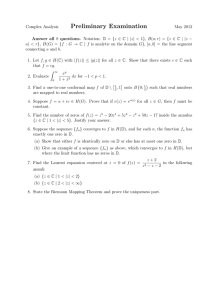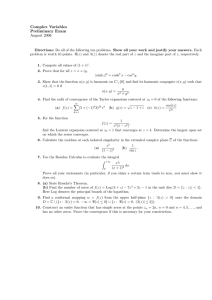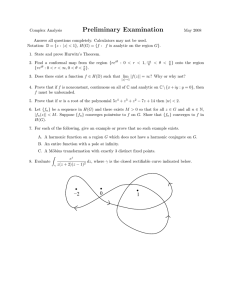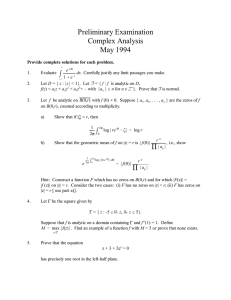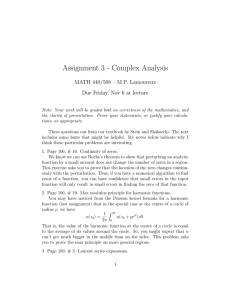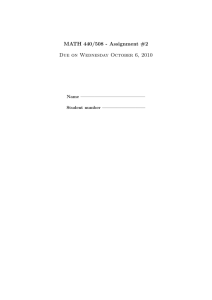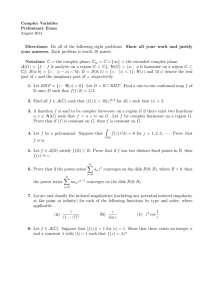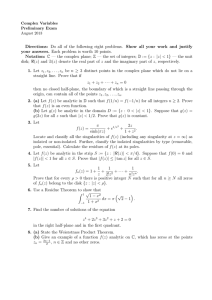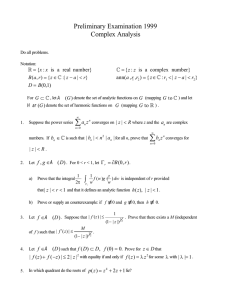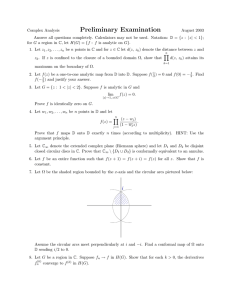Document 10406692
advertisement
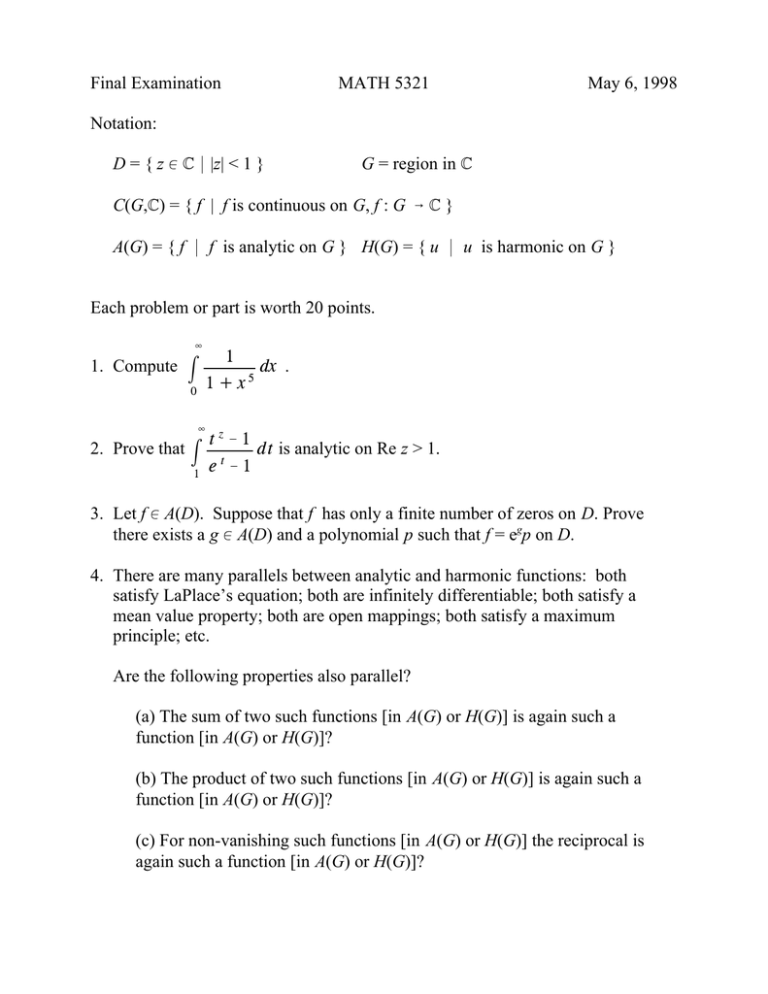
Final Examination
MATH 5321
May 6, 1998
Notation:
D = { z 0 Ü * |z| < 1 }
G = region in Ü
C(G,Ü) = { f | f is continuous on G, f : G 6 Ü }
A(G) = { f * f is analytic on G } H(G) = { u * u is harmonic on G }
Each problem or part is worth 20 points.
4
1. Compute
m Z
4
2. Prove that
V\&
m GV&
FZ F V is analytic on Re z > 1.
3. Let f 0 A(D). Suppose that f has only a finite number of zeros on D. Prove
there exists a g 0 A(D) and a polynomial p such that f = egp on D.
4. There are many parallels between analytic and harmonic functions: both
satisfy LaPlace’s equation; both are infinitely differentiable; both satisfy a
mean value property; both are open mappings; both satisfy a maximum
principle; etc.
Are the following properties also parallel?
(a) The sum of two such functions [in A(G) or H(G)] is again such a
function [in A(G) or H(G)]?
(b) The product of two such functions [in A(G) or H(G)] is again such a
function [in A(G) or H(G)]?
(c) For non-vanishing such functions [in A(G) or H(G)] the reciprocal is
again such a function [in A(G) or H(G)]?
5. In this problem, if you use an infinite sum or product, you must prove that it
converges, i.e., it meets an appropriate set of conditions to ensure convergence.
Find an explicit function f 0 A(Ü) with simple zeros at
and no other zeros.
P , n = 1, 2, 3, . . .,
6. For g 0 A(Ü), let Z(g) denote the zero set of g. Suppose that {fn} d A(Ü) and
that Z(fn) d ß for each n. Suppose there exists f 0 C(Ü,Ü) such that fn 6 f
locally uniformly on compact subsets of Ü. Show that f 0 A(Ü) and that if f ÷
0, then Z(f) d ß.
\
\
\P
% %
%
, n = 1, 2, 3, . . . Prove for each r > 0, there
P
exists an integer N = N(r) such that whenever n > N, then Z(pn) 1 B(0,r) = i.
7. Let RP
\ ' %
4
8. Find the maximal region G in Ü such that j
P'
P
K
\ % converges in A(G).
